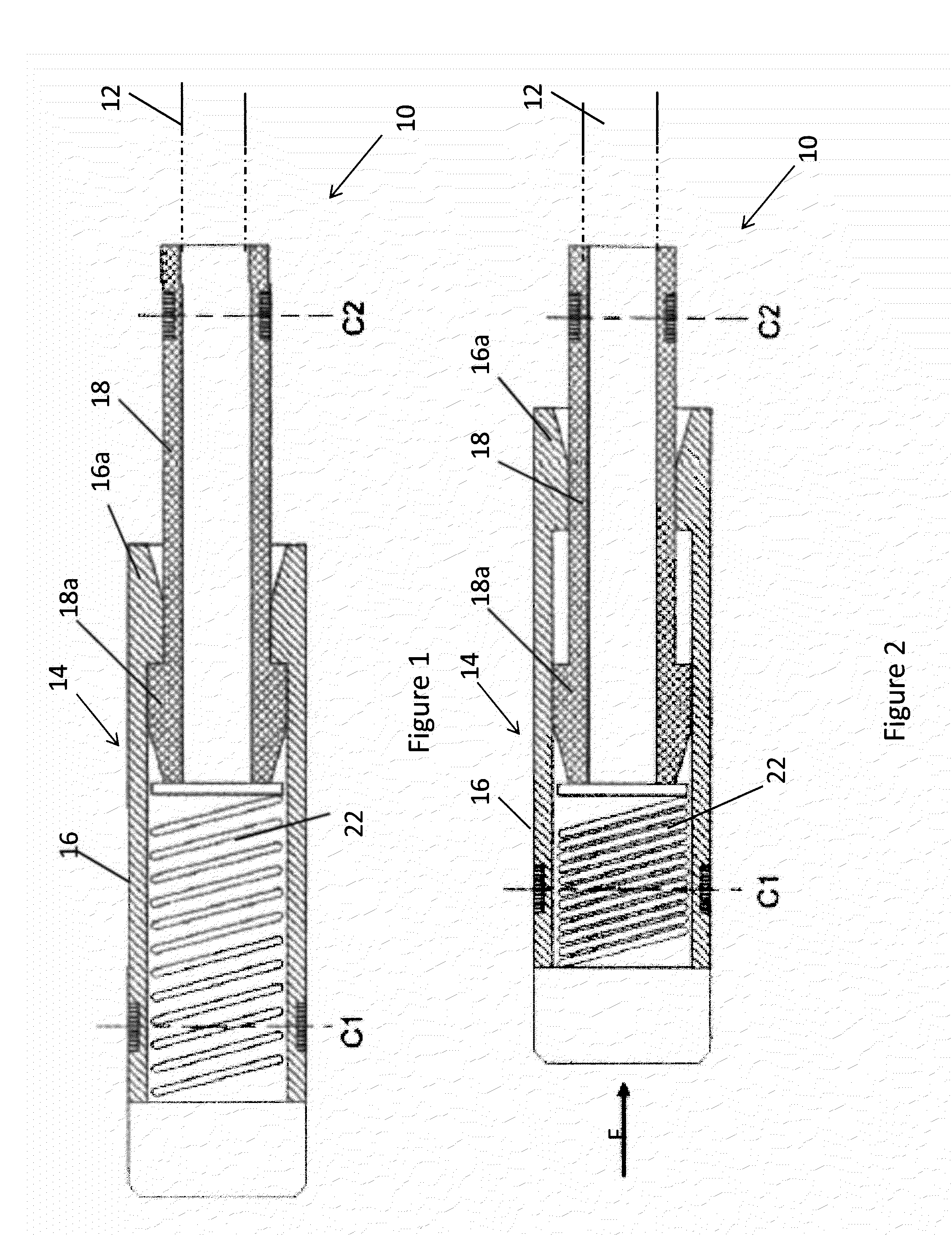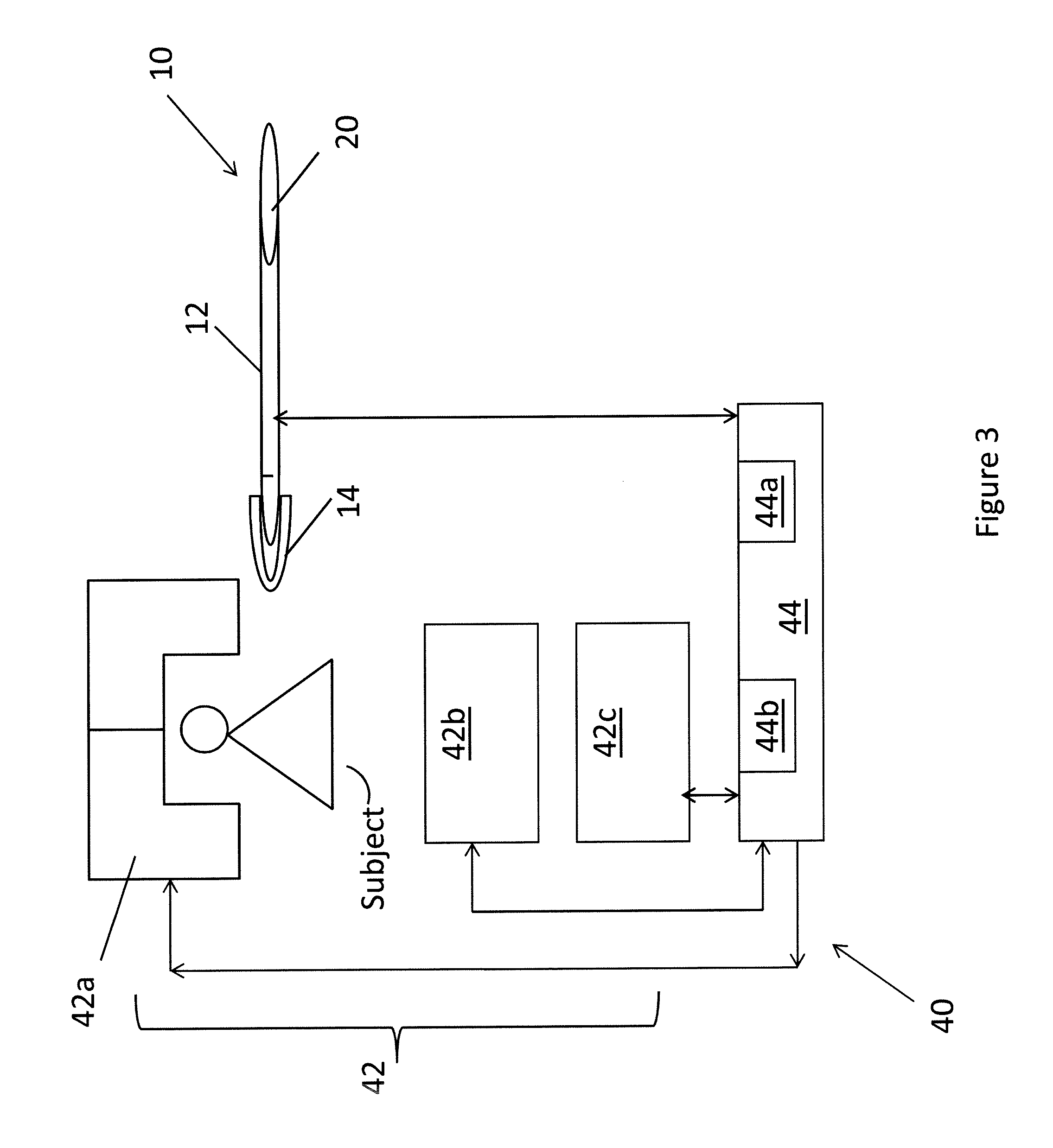Compressable catheter tip with image-based force sensing
a compression catheter and force sensing technology, applied in the field of catheters, can solve the problems of high probability, long rfa procedure, and inability to stop the arrhythmias of the procedure,
- Summary
- Abstract
- Description
- Claims
- Application Information
AI Technical Summary
Benefits of technology
Problems solved by technology
Method used
Image
Examples
Embodiment Construction
[0027]FIG. 1 is an illustration of a catheter 10 comprising a catheter shaft 12 that is formed as a flexible hollow tube. The shaft 12 may be constructed, for example, of a flexible polymer tubing (such as the Pebax brand) or any other material that may be used for medical applications. The catheter 10 also comprises a compressible catheter tip 14 that is attached to the end of the shaft 12 to be inserted in a patient's body. The tip 14 has two main sections, a rigid distal tip section 16 which includes, for example, an ablation tip and a rigid proximal tip section 18 which is fixed to the catheter shaft 12. The two sections 16, 18 generally follow the form of the shaft 12 and are generally tubular. Further, the two sections 16, 18 are configured and dimensioned so that the distal tip section 16 is interlocked with the proximal tip section 18 and the distal tip section 16 is adapted to freely slide back and forth over the proximal tip section 18, within certain limits. The proximal ...
PUM
 Login to View More
Login to View More Abstract
Description
Claims
Application Information
 Login to View More
Login to View More - R&D
- Intellectual Property
- Life Sciences
- Materials
- Tech Scout
- Unparalleled Data Quality
- Higher Quality Content
- 60% Fewer Hallucinations
Browse by: Latest US Patents, China's latest patents, Technical Efficacy Thesaurus, Application Domain, Technology Topic, Popular Technical Reports.
© 2025 PatSnap. All rights reserved.Legal|Privacy policy|Modern Slavery Act Transparency Statement|Sitemap|About US| Contact US: help@patsnap.com



